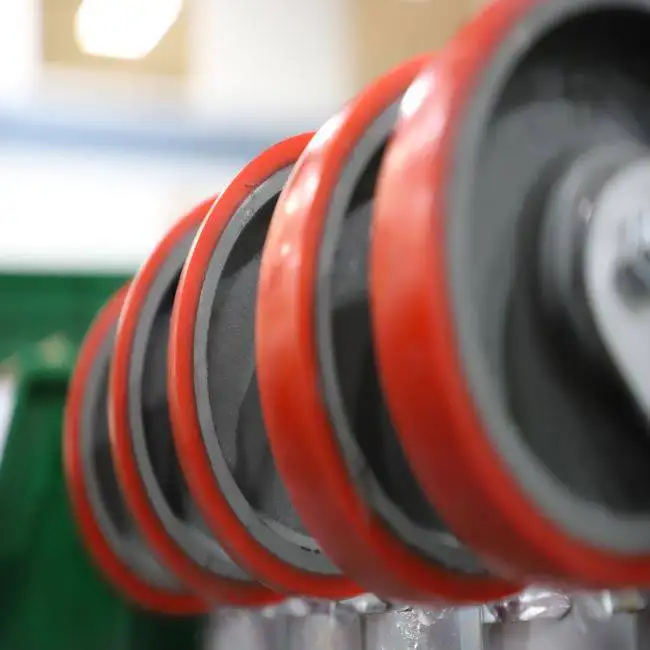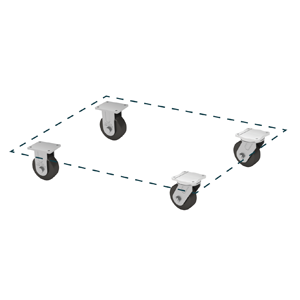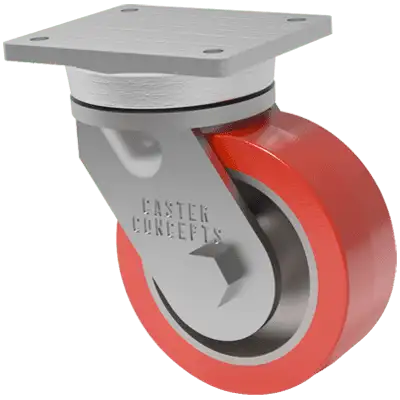

A large agricultural manufacturer contacted Caster Concepts to solve a challenge associated with their heavy-duty carts. These carts transported loads between 5 and 8,000 lbs. The weight the carts supported depended on their station in the assembly cycle.
The current casters they were using were rated at 2,800 lbs. per caster, with a wheel size of 12″ diameter x 3″ width. The manufacturer was experiencing problems when parts were dropped relatively complexly onto the carts.
This sudden impact, known as shock loading, resulted in repeated caster failures, specifically at two stress points: the swivel section and the caster legs. They needed to find a caster to withstand the abusive environment these casters faced daily.
Based on the bolt holes already in the carts on hand, Caster Concepts identified another caster that can handle the shock-loading environment and fit into the existing cart bolt holes used by the old caster.
After analyzing the situation, Caster Concepts determined that an 81 Series swivel (81-12409-65-1) & matching 80 Series rigid (80-12409-65-2) would be the best choice for casters. Swivel and rigid casters are often paired for carts, making turning easy while allowing the cart to track in a straight line. Rigid casters don’t turn, but they help a cart track and can support heavy loads. Swivel casters are designed for maneuverability.
So, in a 4-wheel configuration, two fixed casters are in the back, and two swivel casters are in the front, allowing the cart to turn quickly and track well when towed.
 Reinforced Legs Help Mitigate Shock Load
Reinforced Legs Help Mitigate Shock Load
The bubbled legs featured in our 81 series casters were the answer for this manufacturer. The legs are designed to take impact and are continuously welded inside and out to the yoke base. It also features a single-ball race design, providing a higher-strength swivel section. This caster is designed for applications where shock loading is prevalent.
While each caster is now rated at 5,500 lbs., which might seem overkill, this extra capacity results in a much longer caster life for these carts. Another feature of these particular casters is that they come with 1″ thick polyurethane on the wheels to help increase capacity and make it easier for the wheels to overcome small debris that could be present on the ground. It also made the carts easier for the operators to move.

81 Series Caster
These carts are used in the final assembly stages at the facility, and the results speak for themselves. To date, these upgraded casters have had 0 failures.
This has resulted in substantial cost savings for the agricultural manufacturer. The amount of money lost in having a cart failure is estimated at $10,000-15,000 per day based on many factors:
–The labor for maintenance teams to replace the caster that has failed
— The money lost from downtime for the equipment that would’ve been completed without a failure
The productivity cost of hourly employees on the assembly line who don’t have components/parts to work on.